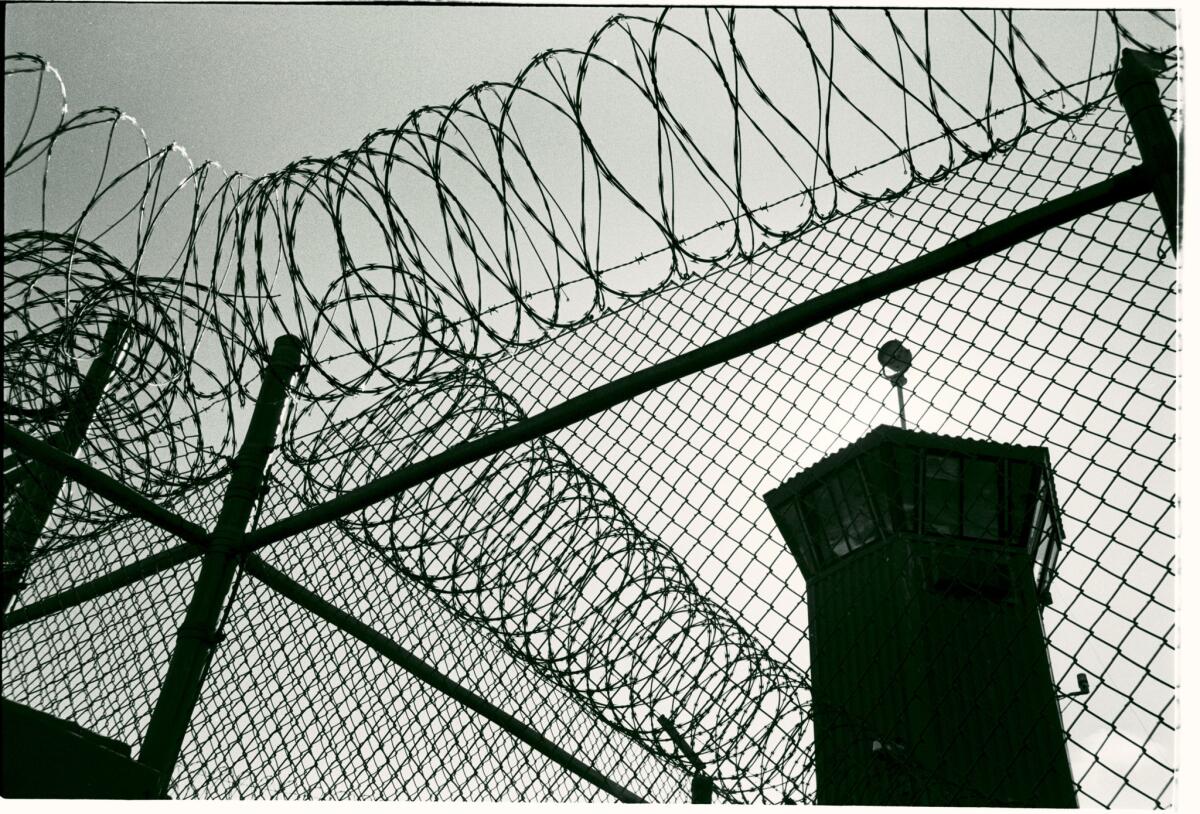Prison solitary confinement Q&A: What you need to know

Tall fences and razor wire encircle Pelican Bay State Prison in Crescent City, where some criminal offenders had been held in solitary confinement because of prison gang activity. Under an agreement announced Tuesday, thousands of inmates in solitary will be released into the general prison population.
- Share via
Reporting from Sacramento — California officials on Tuesday announced an agreement to move thousands of prison inmates out of solitary confinement. The new policy comes after years of litigation by inmates held in isolation at Pelican Bay State Prison and other facilities.
Under the legal agreement, many of the inmates held in isolation will be moved to the general prison population. The state will create high-security units that keep its most dangerous inmates in a small group setting.
NEWSLETTER: Get essential California headlines delivered daily >>
Why did this happen?
The decision to stop using solitary confinement to isolate prison gang members was triggered by a class-action lawsuit brought by inmates held a decade or more within Pelican Bay State Prison. Many of those same inmates organized mass prison hunger strikes in 2011 and 2013 to bring attention to their cause. However, the state corrections department has been grappling with the call for change since a panel of experts in 2007 concluded solitary confinement did little to improve safety in California prisons. Recently, the extended use of solitary confinement has been criticized by President Obama and U.S. Supreme Court Justice Anthony M. Kennedy.
Why were prisoners in solitary confinement?
California uses solitary confinement two ways. Sentences of up to five years in isolation are used to punish inmates who commit new crimes in prison or serious rules violations. Those inmates will not be affected by the agreement announced Tuesday.
Since the 1980s, thousands of inmates who were in prison gangs, or associated with them, were held in isolation indefinitely unless they agreed to become an informant. Two years ago the state softened that rule to require actual gang activity and released some 1,100 prisoners from isolation. Lawyers for inmates in the class-action lawsuit alleged some men were placed in solitary confinement for possessing gang-related artwork or based on allegations by confidential informants. These inmates will benefit from the agreement.
How will things change for the prisoners and prisons?
California will no longer place inmates in solitary confinement based on their affiliation with a prison gang, but will still use solitary to punish those who break rules or commit new crimes behind bars. Some 1,800 gang-affiliated inmates currently in solitary will be returned to the general prison population over the next two years. Those who continue to present a security threat, however, will be moved to new high-security group housing units, similar to those once used before the opening of large solitary confinement units in the 1980s.
Is solitary confinement used in other states, or in federal prisons?
Criminal justice experts estimate some 80,000 people are held in solitary confinement in state and federal prisons. That number does not include jails and juvenile detention facilities. However, the standards vary greatly. Texas, which now leads the nation in the use of solitary confinement, holds inmates there indefinitely. Colorado two years ago decided to limit solitary confinement only to those who commit serious offenses within prison, and cap even those stays to 12 months.
Hoy: Léa esta historia en español
More to Read
Sign up for Essential California
The most important California stories and recommendations in your inbox every morning.
You may occasionally receive promotional content from the Los Angeles Times.














